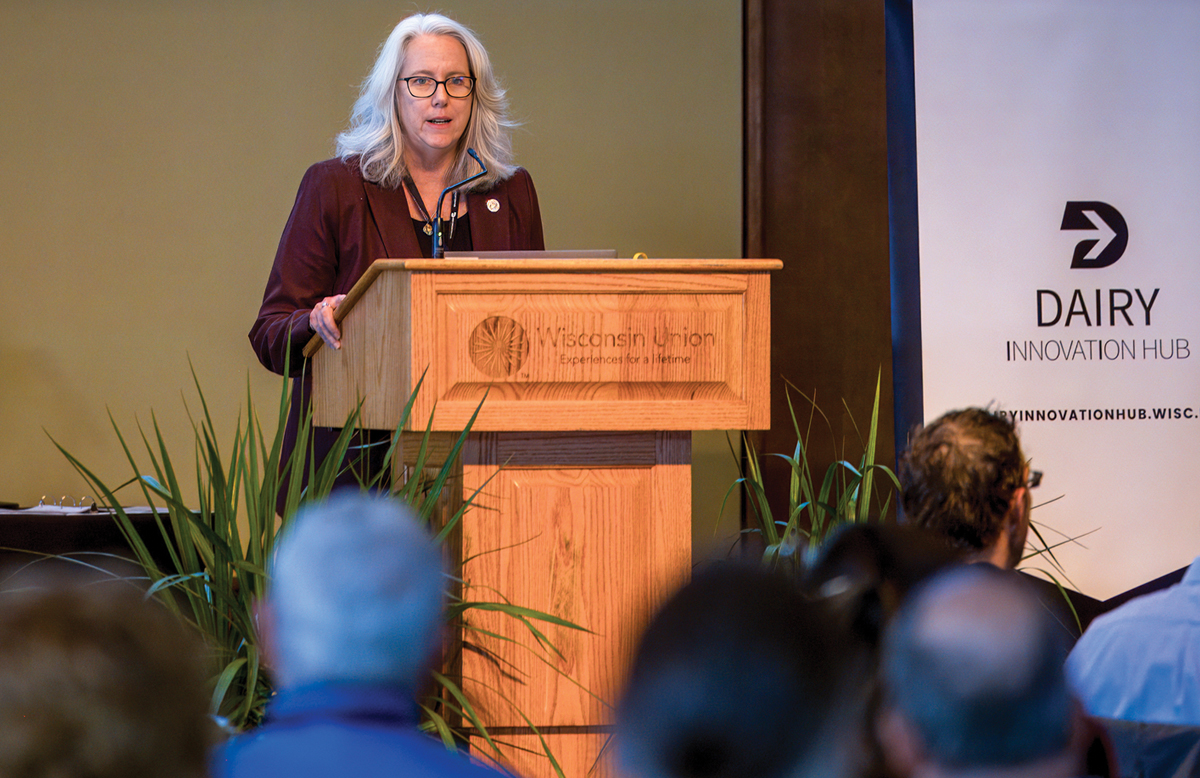In Vivo
Federally Funded Research Drives America’s Dairyland

In the mid-1800s — a time when a relatively young country was marked by intense polarization that led to a civil war — American leaders had an idea. They decided to make a collective investment of federal resources to create colleges in every state and territory for the “benefit of agriculture and the mechanic arts,” as stated in the legislation known as the Morrill Act.
By the time of the Civil War, the U.S. had a total of 21 universities, where faculty were adhering to the scientific method because they saw that science could drive economic growth through discovery and innovation in the emerging fields of mining and agriculture. To build on their success, Congress passed the Morrill Act in 1862, establishing a network of public universities in every state that could focus on training farmers and providing farms with research and development. It played a foundational role in American agriculture.
The return on the investment is easy to demonstrate. For example, at the time of the Civil War, average corn yields were around 30 bushels per acre; in 2024, that number was 183 bushels per acre. This has happened despite decreases in the number of U.S. farmers and the amount of farmland, meaning agriculture has become more efficient over time, producing enough food to feed our population using fewer workers who are then able to pursue other careers. Also, globally, American consumers today spend the smallest share of household income on food.
When you examine Wisconsin dairy, that success is even more pronounced. Wisconsin is home to roughly 1.3 million milking dairy cows today. Compare this to 2.2 million in 1950. In fact, most Wisconsin counties (save for a few in Northeastern Wisconsin) are actually at an all-time low for cow numbers. Yet, with fewer cows, we are producing more milk. In 1950, Wisconsin was producing 14.8 billion pounds of milk per year, but today the state’s dairy farms produce 32.1 billion pounds annually.
How can you make more than double the milk with almost half the cows while contending with rapid urbanization? This is where research and management come in! Both have resulted in more nutritious feed; high-tech selective breeding and genomics; improved cow welfare and comfort; better disease mitigation and sanitation; more effective land stewardship; and more.
All of this is a testament to the success of U.S. agricultural innovation, which has been driven by a partnership between farmers and professors at public land grant universities. And that’s just agriculture. The return on federal investment in research is just as significant when you examine the life sciences and the enormous impact innovation in these fields has had on human and animal health, the environment, and more. But that may need to be a topic for another day.
What’s critical now is that federal research funding is in serious jeopardy. We’re at a pivotal tipping point. Science funding is at its lowest level in decades, and signs point to more cuts to come. As a result, the economic livelihood and health of our nation’s citizens are also in great danger, and it may be extremely difficult to find our way back to prosperity if something doesn’t change now.
For our graduates who have continued on to careers in science, thank you for all you do to apply the scientific method in improving businesses, non-profits, schools, and agencies around the world. For those not actively working in science, we know you still use the critical thinking you honed at CALS in your daily lives. To honor this tradition, please consider showing your support for federally funded science through the tools provided by the Wisconsin Foundation and Alumni Association. Your strong voices are more important now than ever.
This article was posted in Economic and Community Development, Food Systems, In Vivo, Summer 2025 and tagged Dairy, federal research funding, land-grant universities, Morrill Act, Wisconsin.
